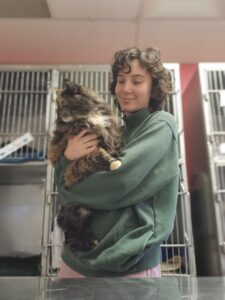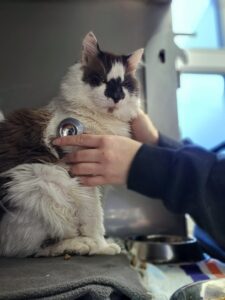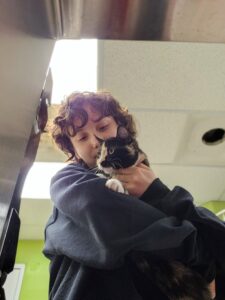Co-regulation is where one nervous system calms another. When children are stressed or struggling with strong feelings, parents or caregivers can help calm them down. At its core, co-regulation explains why just being with someone helps.
 But does co-regulation work the same for cats?
But does co-regulation work the same for cats?
To get the lowdown on feline feelings, Jemma McKinnon, a dedicated high school student, conducted a quantitative research study with SPCA shelter cats.

“I frequently volunteer at the SPCA already and have often wondered what I could do to help those cats who appear to be more stressed and difficult to calm,” Jemma reflected. “During my time cuddling with them over the past year, I have noticed mixed reactions. On many occasions, I have had wholesome interactions with cats where they have been super cuddly and engaged, but others – not so much! I decided to investigate if there was something that I could do to help them relax and to create the best experience for both of us. Regardless of how the cats respond during my regular volunteer work, or in my data collection, I cherish my time with them.”
“I have been fortunate to be able to collect my data with the cats at the Dartmouth SPCA to increase my understanding of how different human behaviours may affect the nervous system responses of the animals we love,” Jemma continued. “The cats in my research study are placed in one of three distinct groups, with each group receiving different interaction styles with myself. Their heart rates are taken before and after receiving two minutes of exposure to the interaction style as a measure to determine the impact on their nervous system.”
Are you ready to hear the three adorable groups?
- A cuddling group
- A petting group
- A verbal reinforcement group
“In the cuddling group, the cats are held near my chest while I practice mindful breathing,” explained Jemma. “As this lowers my heart rate, it is hypothesized that the cats will have a similar nervous system, calming response. In the petting group, the cats remain in their respective kennels with the door open and receive physical touch. In the verbal reinforcement group, the cats remain in their kennels with the door closed and receive positive comments in a gentle, quiet tone.”

“Understanding behaviour strengthens the bond between animals and humans, and betters the lives of our domesticated friends,” Jemma shared. “Since they rely on us for so many things, it is crucial to know what the best way to interact with them is to calm their nervous systems. My research will both benefit people who have the privilege to spend time with cats, and the cats themselves.”
Jemma is a lifelong animal lover so studying this topic came naturally. At home, Jemma cares for two different types of geckos – a Leopard Gecko named Blue, and a Crested Gecko named Navy. Jemma also has a three-year-old Morkie-Shih Tzu mix named Barkley and an SPCA alumni guinea pig called Eos, named after the Greek goddess of dawn.
“I have often been called an ‘animal whisperer’ since an extremely young age,” Jemma smiled. “I have always been drawn to them and felt a special connection to them. This kind of research means so much to me personally due to my own aspirations of becoming a veterinarian. Since I am still too young for university, working in the field of zoology and gaining invaluable experience in high school through the SPCA has been quite a joyous privilege to part-take in.”
Jemma completed their school study and was selected to represent their school at a regional level on March 31st at SMU. We can’t wait to see the results! But one thing we are certain of is how co-regulation works on animal lovers. If you’ve ever lived with a pet before, you know what we mean. Pets seem to sense our sadness and come to comfort us. They are experts at co-regulating with us… so now it is our turn to learn new ways to help them.
Are you passionate about pets and looking for a rewarding career? You could be in our next class for the Veterinary Assistant Diploma Program at the Nova Scotia SPCA College of Animal Welfare. Click here to learn more.
